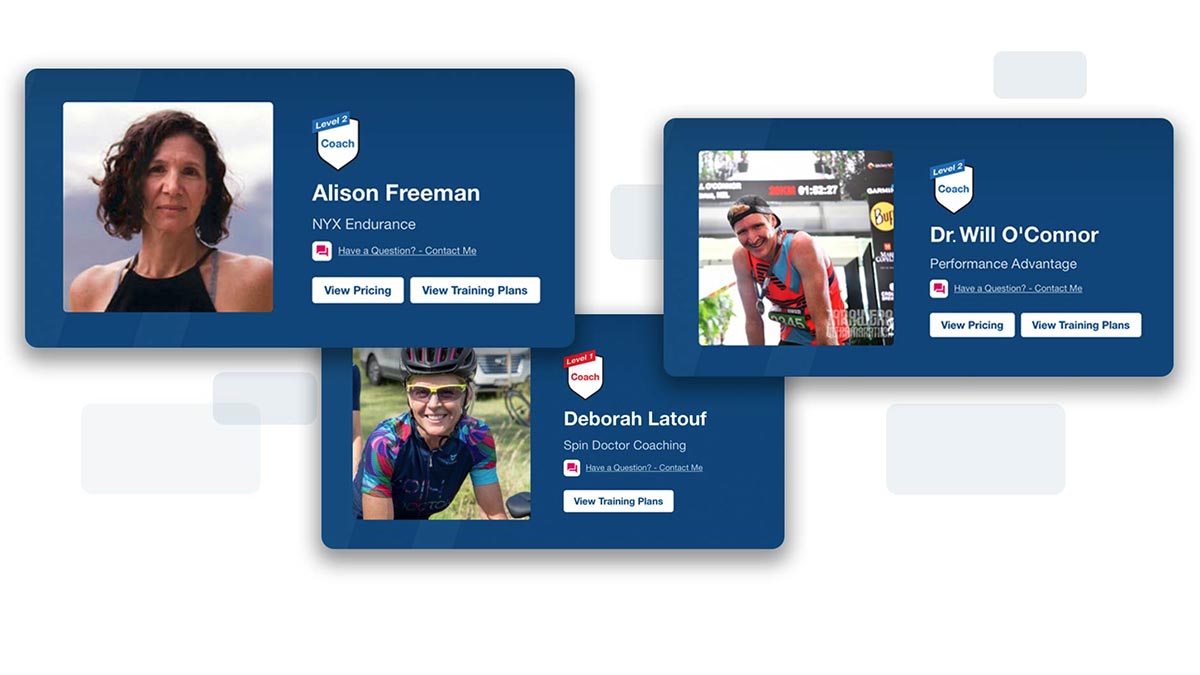In a perfect world, you’d have months to get all your runners ready for their upcoming races. But sometimes you might have an existing client tell you they’ve signed up at the last minute for an event or get a new athlete coming into your group mid-season. In both scenarios, you need to build up sufficient load tolerance for them to handle the demands of racing without tipping them over the edge and risking injury and burnout.
Training athletes on a short timeline is always a tricky balancing act. If you don’t push them hard enough and expose them to sufficient stimuli, they’ll struggle to finish the course and reach their goals. But if you go overboard and try to cram in too much volume and intensity, you could run the risk of them not even making it to the start line because they’ve already broken down. To get the practical perspective of an expert coach and competitor, I reached out to Farhad Zarif, a Kansas City-based coach whose journey from battling cancer to finishing ultramarathons like Leadville we shared in a previous TrainingPeaks article.
Onboarding a Client Mid-Season
When meeting a new athlete for the first time, it’s important to forge a strong connection with them, demonstrate that you understand their needs and goals, and create a sense of mutual trust. Before plotting out their programming for the rest of the season, you need to get a sense of where they’re currently at and what had occurred before they came to you for assistance.
“The first thing I do when a new client comes to me mid-season is to interview them thoroughly,” Zarif said. “If they have training logs, I’d like to review those to see what they’ve been doing until this point. In addition to knowing their biological age, it’s helpful to know their training age. I also ask if they’re dealing with any acute or chronic injuries so that we can come up with a plan to fix or manage them. The more I get to know them as a whole person – physically, emotionally and spiritually – the better equipped I’ll be to help them reach their goals.”
Unless the athlete is a beginner or has been guiding their own training, they’ve likely worked with other coaches in the past. Learning more about the nature of this prior programming, their old coach’s methods, and what worked well and didn’t is essential for setting up a productive athlete-coach relationship.
“I like to find out what their previous coach’s style was and what kinds of training they emphasized,” Zarif said. “It’s also useful to hear why they decided to part ways. What do they expect me to do differently, and what might they want to be similar? It’s not just about the mileage or specific training plan they used. The reasons that they moved on from this coach can also tell me a lot about the athlete’s personality and how they best respond to coaching. One person might appreciate a blunt, old-school coach, whereas another can find that too much to handle. Did the athlete give up on the coach or vice versa? It’s also useful to see what kind of mindset they are bringing to the table today. If they had a bad experience, they might be feeling negative. Or maybe they’re feeling positive and just looking for a change. It’s only by asking many questions that I can see what they want me to do for them and how I’m going to do it.”
Fueling and recovery are two other key considerations when getting up to speed with a new client that engages you partway through the competitive calendar. Creating an effective program that they will stick to is important, but it will only be effective if they have the raw materials to power peak performance and bounce back between training sessions.
“The athlete that eats, hydrates, and sleeps well will have many more tools available to them to be successful in training and competition,” Zarif said. “I need them to be honest with me about their nutrition, rest habits, and whether they’re getting enough fluids and electrolytes or not. It’s also beneficial to know which supplements they’re taking – if any – so we can dial that in as well.”
Using a Physical Assessment to Plan Ahead
Getting such comprehensive background information can give you a more complete picture of your new client’s past so that you can start planning for their future. But in addition to learning more about their training experiences, relationships with previous coaches and injury history, it’s essential to gauge where they’re at from a physical standpoint, too, so that you can look for holes to plug and opportunities for improvement.
“Once I’ve interviewed the athlete, I put them through a conditioning workout for 60 to 90 minutes,” Zarif said. “This assessment allows me to test their endurance, strength, power and flexibility – all of their physical qualities. It’s like buying a home: you need a complete report to make sure there are no cracks in the foundation or other issues with the structure. What are their strengths and weaknesses? I want to keep the strengths and develop these, but also tackle the weak points and work on them until they become assets.”
After completing his conditioning assessment, Zarif needs to know-how long he will have to work with the new client before their upcoming race to plan accordingly. He’ll also get a sense of how the upcoming events fit into their midrange and long-term goals.
“Ideally, I’d have 12 weeks to prepare an athlete who comes to me mid-season for their first event,” Zarif said. “But if not, then I have to work backward from race day to devise an effective shorter program. Any good coach with education and experience will know-how to push such a client to their limit without forcing them past it. I want to train them hard, but they need to be able to show up the next day without being too sore and ready to put in full effort in another high-quality session. The more of these we can stack together, the better prepared they’ll be for their upcoming events.”
While the offseason is often a good time to use compound exercises to develop an athlete’s strength, power, and, as I’ve shared in previous articles, the durability of their bones and connective tissues, mid-season sessions offer the opportunity to work on other elements of new clients’ physicality.
“With athletes who are on a short timeline, most of the training we do is spent on functional training, conditioning and mobility,” Zarif said.
Preparing an Existing Client for a Last-Minute Race
Another kind of short timeline training scenario is when one of your existing clients springs it on you that they’ve signed up for an event that’s just around the corner. An inexperienced coach might cower from this curveball, but Zarif believes that there’s little to worry about as long as you’ve been preparing the client in a well-rounded, comprehensive way.
“I believe that all of my athletes should remain race-ready,” he said. “I actually encountered this situation with a client earlier today. He’s been working with me for several years, so I know that he isn’t just physically prepared for the event but also has his nutrition, hydration, sleep, and recovery dialed in.”
So when such an athlete shares their last-minute race plans with you, what should you focus on in the remaining time before they’re standing on the start line?
“Most of the time, the mental component of racing is the most critical, yet it’s often overlooked,” Zarif said. “The client I mentioned has finished several marathons already, so his biggest challenge in running his first ultra is the mindset challenges of going six extra miles in his first 50K. I’m addressing this by building his self-confidence. If I can create opportunities for him to get some wins in training, he’ll have a greater belief that he can tough it out from miles 24 to 30. If you’re strong in your mind, heart, and soul, you’ll cross every finish line there is.”
As race day approaches, it’s also important to pay attention to details and be on high alert for any physical or psychological signs that might indicate that your athlete is veering off course in their final preparations.
“As a client gets closer to their event, I keep my eyes and ears open to make sure everything’s all right,” Zarif said. “It’s more than just looking at their times and form – I want to know what their motivation level is before we start training if they’re hydrated, and how well they slept. It’s important to know where their head is as well as their body so that I can make adjustments if needed. It’s also crucial for me to demonstrate that I value them by giving 100% of my attention and effort so that they feel like there’s a team behind them going into the race.”









